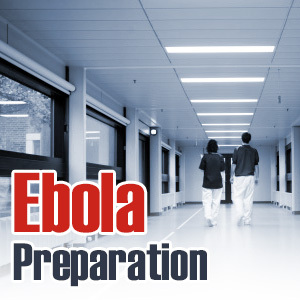
As the Ebola virus continues to devastate parts of West Africa and creeps into Europe and the United States, the most likely targets right now are the healthcare personnel (HCP) tasked with treating and caring for the ill. Since HCP’s work closely with patients and are present during some of the most contagious times of the illness, it is understandable how the risk is greater and more dangerous to providers.
Ebola itself is a fairly difficult disease to transmit and infection requires direct contact with an infected individual’s bodily fluids. This explains why those affected tend to be healthcare workers and close family members. In combating Ebola, strong hygiene and cleanliness are some of the most important tools in preventing the spread of the disease.
Using this information and health guidelines, there are important steps that healthcare agencies and personnel can take to significantly reduce risk and potential for further contamination.
First and foremost, agencies must reevaluate their infection prevention protocol to make sure it is updated and executable. During this process it is also important to determine whether those plans are relevant to the unique dangers of the Ebola virus. This protocol should also be updated with the latest guidelines established by the Center for Disease Control (CDC), World Health Organization (WHO), and local State Departments.
A crucial part of this protocol is an accurate inventory of supplies, distribution methods, and training.
Questions to consider:
- What personal protective equipment (PPE) is available such as gloves, masks (N95 or surgical masks), and face shields for employees and patients?
- In the case of a pandemic, how long will the supply last if there are market shortages or distribution disruption?
- Where are the PPE’s located? Are there off-site storage facilities? If your agency has traveling personnel such as home health aides, where can they pick up supplies?
- Are any of the PPE’s expired or close to expiration?
- Do you have alternative vendors available in case of shortages or unavailability? Are credit applications processed and accounts ready?
- When was the last time your personnel was trained or used PPE’s?
After ensuring your agency and staff are adequately prepared to respond, it is time for honest education and communication. It’s important for HCP’s to remain calm and know how to respond appropriately. Sometimes the hysteria of the illness can cause more panic and distress then the actual disease itself. Share regular updates from public health officials and distribute posters and flyers in the facilities to generate awareness for employees and patients.
This educational process is important, especially if and when a situation might occur. HCP’s should understand and be prepared to act according to their agency’s infection prevention protocol either alone or in a team setting. When investigating an Ebola case, it is crucial to document other individuals with close contact with the patient and the patient’s symptoms and development. These factors must by understood by HCP’s when relaying information to other public health authorities.
The suggested course of action for an HCP who comes across an individual showing possible Ebola symptoms is to:
- Wear PPE materials immediately. The HCP should cover all exposed skin, especially the hands, eyes, nose, mouth, and ears.
- The HCP should isolate the patient into a separate room with closed doors and windows by themselves. This includes keeping family, relatives, friends, and pets away.
- The HCP should then call 9-1-1 immediately and inform emergency officials of the situation. As possible, HCP should inform their agency and local health officials as well, only after calling 9-1-1.
- While awaiting for assistance, the HCP should not leave the premises and should maintain their own isolation – preventing any contact with anyone except properly protected health officials.
- During this time frame, it is helpful for the HCP to review and document any information that may be helpful in an investigation such as: recent patient visitors, a timeline of symptom progression, and any household areas that might have come in contact with the patient’s bodily fluids.
These measures are extremely important for all healthcare personnel, especially home health and hospice workers who are in continuous and direct contact with patients on a regular basis.
As always, to learn more seek guidance from the WHO, CDC, Human & Health Services, State and local Departments of Health.
